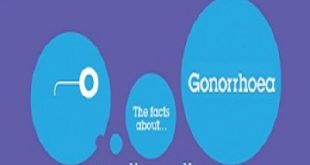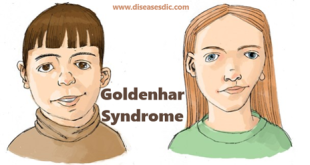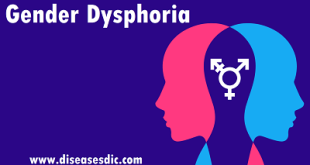What is gingivostomatitis?
Gingivostomatitis is the long name for a condition that results in a very sore mouth. It’s caused by a viral infection and is common in children. The symptoms can be mild or severe. While it can be disconcerting to see sores in your baby’s mouth – and to know that she hurts – usually there’s no cause for worry.
Most people carry around the viruses that can cause the condition. In fact, your baby’s bout of gingivostomatitis may be her initial infection with the herpes simplex virus type 1 (HSV-1), which most people pick up in early childhood and carry for the rest of their lives. The initial infection usually goes unnoticed, but if it does make itself known, it does so in the form of gingivostomatitis. (HSV-1 can cause cold sores, too.)
Gingivostomatitis can also be caused by a coxsackie virus, the culprit in hand, foot and mouth disease and herpangina.
Pathophysiology
Herpetic gingivostomatitis originates from a primary infection of HSV-1. The series of events that take place during this infection include replication of the herpes simplex virus, cell lysis and finally, destruction of the mucosal tissue.
HSV-1 can very easily enter and replicate within epidermal and dermal cells through skin or mucosal surfaces which have abrasions. This results in numerous small vesicles or blisters of up to 1-2mm on the oral mucosa, erosions on the lips, eventual hemorrhagic crusting and even ulceration, covered by a yellowish-grey pseudomembrane, surrounded by an erythematous halo.
As the virus continues to replicate and incolulate in great amounts, it can enter autonomic or sensory ganglia, where it travels within axons to reach ganglionic nerve bodies. HSV-1 most commonly infects the trigeminal ganglia, where it remains latent. If reactivated, it presents as herpes labialis, also known as cold sores.
Causes
There are many causes of gingivostomatitis. The most common is viral infections. Other common causes include:
- Injury or irritation to the mouth or throat
- Fungal or bacterial infections
- Irritating foods, such as citrus fruit or spices
- Irritating chemicals, such as toothpaste or mouthwash
- Lack of certain vitamins, including vitamins B and C
- A weakened immune system
- A systemic infection or disease
Who’s at risk of Gingivostomatitis?
- Although Gingivostomatitis can affect anyone, it’s most common among young children between 6 months – 5 years. While it’s hard for a parent to see their child in pain, there’s generally no reason to worry about the infection itself, regardless of its cause.
- On the rare occasion that hospitalization is required, it tends to be a result of dehydration as the pain and swelling in a severe case can make little ones less inclined to eat or drink. Reach out to your doctor if your child has gone for more than 6 hours without a wet diaper!
- Very rarely, if the case of gingivostomatitis is caused by the HSV-1 virus, a complication may occur if the child gets some of the fluids from a cold sore into her eye, resulting in an infection of the cornea called Herpes Simplex Keratitis.
- If your child has gingivostomatitis and you notice their eyes have gotten red and watery and particularly sensitive to light, schedule a visit with your doctor as soon as possible. This complication can cause lasting damage to the affected eyes if not managed.
What are the symptoms of gingivostomatitis?
Symptoms of gingivostomatitis can vary in seriousness. You may feel minor discomfort, or experience severe pain and mouth tenderness. Symptoms of gingivostomatitis may include:
- Tender sores on the gums or insides of cheeks (like canker sores, they are grayish or yellow on the outside and red in the center)
- Bad breath
- Fever
- Swollen, bleeding gums
- Swollen lymph nodes
- Drooling, especially in young children
- A general feeling of being unwell (malaise)
- Difficulty eating or drinking due to mouth discomfort, and in children a refusal to eat or drink
Complications of gingivostomatitis
Herpes simplex virus type 1 (HSV-1)
- Herpes simplex virus type 1 (HSV-1) can lead to gingivostomatitis. This virus usually isn’t serious, but it can cause complications in babies and those with weakened immune systems.
- The HSV-1 virus can also spread to the eyes, where it can infect the corneas. This condition is called herpes simplex keratitis (HSK).
- You should always wash your hands after touching a cold sore, as the virus can easily spread to the eyes. Along with pain and discomfort, HSK can cause permanent eye damage, even blindness. Symptoms of HSK include watery, red eyes and sensitivity to light.
- HSV-1 can also transfer to the genitals through oral sex when mouth sores are present. Most cases of genital herpes are due to HSV-2. Painful genital sores are the hallmark of HSV-2. It’s highly contagious.
Decreased appetite and dehydration
Children with gingivostomatitis sometimes refuse to eat or drink. This can eventually cause dehydration. Symptoms of dehydration include:
- Dry mouth
- Dry skin
- Dizziness
- Tiredness
- Constipation
Parents may notice that their child is sleeping more than usual or isn’t interested in their usual activities. Contact your doctor if you suspect your child has gingivostomatitis and refuses to eat or drink.
How is Gingivostomatitis Diagnosed?
For diagnosing Gingivostomatitis, the physician will first take as detailed history of the patient. This will include any history of being in contact with anyone infected with a herpes virus. A careful inspection of the patient’s mouth will then be conducted which will include the gums tongue, and roof of the mouth. The lesions or blisters then will be examined.
In majority of the cases, a close observation of the lesions is good enough to confirm a diagnosis of Gingivostomatitis. In some cases, the physician may take a swab and send it for further analysis to confirmatively diagnose Gingivostomatitis.
Treatment
Treating gingivostomatitis focuses on providing relief from the painful symptoms and getting rid of the infection.
Standard ways to reduce the discomfort associated with gingivostomatitis include:
- Taking over-the-counter pain relievers, as directed
- Rinsing the mouth with a saltwater solution (1/2 teaspoon of salt in 1 cup of warm water)
- Using medicinal mouthwashes
- Drinking plenty of water
- Eating soft, bland foods, such as applesauce, mashed bananas, and warm oatmeal, that make eating less painful
A doctor may also prescribe acyclovir, which also helps treat chickenpox, herpes simplex, and shingles. Studies have found that the use of acyclovir:
- Shortened the duration of symptoms by 20–50 percent
- Led to more rapid healing of sores
- Helped people return to regular eating and drinking habits faster
Symptoms of gingivostomatitis usually disappear without medical treatment within 1 to 2 weeks, but the infection may recur.
People also need to take steps to prevent the spread of gingivostomatitis, particularly among young children.
The condition spreads through saliva and by touching the sores, so it is sensible to try to avoid close contact with infected people, and not to allow children with gingivostomatitis to share toys or personal items.
How to prevent gingivostomatitis?
Taking care of your teeth and gums may decrease your risk of getting gingivostomatitis. Healthy gums are pink with no sores or lesions. Good oral hygiene basics include:
- Brushing your teeth at least twice a day, especially after eating and before going to sleep
- Flossing daily
- Getting your teeth professionally examined and cleaned by a dentist every six months
- Keeping mouth pieces (dentures, retainers, musical instruments) clean to prevent bacteria growth
To avoid the HSV-1 virus that can cause gingivostomatitis, avoid kissing or touching the face of a person who is infected. Do not share makeup, razors, or silverware with them.
Frequently washing your hands is the best way to avoid the coxsackievirus. This is especially important after using public toilets or changing a baby’s diaper and before eating or preparing meals. It’s also important to educate children about the importance of proper hand washing.
 Diseases Treatments Dictionary This is complete solution to read all diseases treatments Which covers Prevention, Causes, Symptoms, Medical Terms, Drugs, Prescription, Natural Remedies with cures and Treatments. Most of the common diseases were listed in names, split with categories.
Diseases Treatments Dictionary This is complete solution to read all diseases treatments Which covers Prevention, Causes, Symptoms, Medical Terms, Drugs, Prescription, Natural Remedies with cures and Treatments. Most of the common diseases were listed in names, split with categories.







